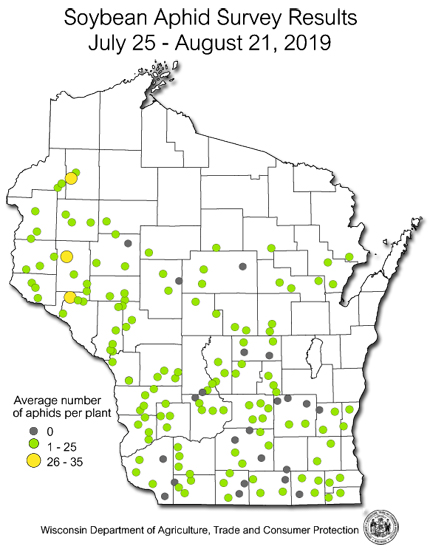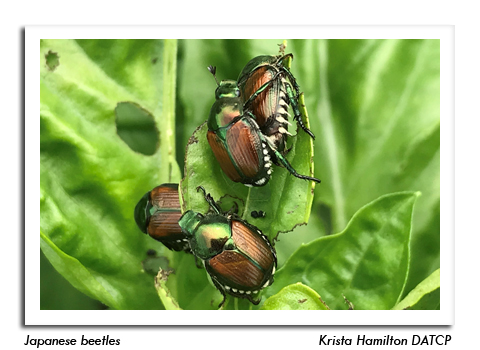
 |
|
|
Soybeans
Volume 64 Number 17 Date 08/22/2019 SOYBEAN APHID - Densities recorded during the annual survey this month have been very low, aside from a few moderate-population fields in the west-central area. The state average count in 155 fields sampled from July 25-August 21 is only four aphids per plant, with no surveyed fields showing above-threshold populations of 250 aphids per plant. For comparison, the 2018 survey found an average of 14 aphids per plant, the 2017 average was six aphids per plant, averages from 2013-2016 ranged from 8-55 aphids per plant, and surveys from 2010-2012 documented counts of 7-16 aphids per plant. This season's state average is the lowest in the 18-year history of Wisconsin soybean aphid surveys. Although some localized fields have likely developed economic populations (>250 aphids per plant), survey results suggest that aphid control has generally not been required for most soybean acres this month. JAPANESE BEETLE - Defoliation has been observed in 74% of the soybean fields examined in late July and August. Last season at this time, 52% of surveyed fields had some degree of Japanese beetle feeding. Counts taken during the aphid survey ranged from 1-184 beetles per 100 sweeps, with a state average of 14 per 100 sweeps (8 per sweep in 2018). The highest counts of 50 or more beetles per 100 sweeps were recorded in Pierce, Rock, Sauk and Walworth counties. Although many fields have an abundance of beetles and varying levels of perimeter defoliation, the degree of injury is generally not severe enough to justify treatment. -- Krista Hamilton, DATCP Entomologist 



|
|
|